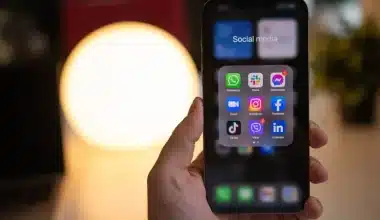Guerrilla marketing is one of the tactics that different brands employ to raise awareness or launch new products. Guerrilla marketing is a successful method of promoting a business utilizing innovation and creativity. Small businesses nowadays frequently employ guerilla marketing strategies to generate discussion about new products and services, attract new customers, and increase brand awareness. Guerrilla marketing, however, has advantages and disadvantages. There are numerous examples of guerrilla marketing that businesses have used to enhance brand awareness over the years—we explained many in this guide.
An Overview of Guerrilla Marketing
The aim of guerrilla marketing is to engage customers with a company. It can take different methods of approach they may take place indoors, outdoors, as an “event ambush,” or as an immersive campaign. It relies heavily on creativity.
The idea is to employ tactics like raids, ambushes, and elements of surprise—but from a marketing perspective!—much like guerrilla warfare. Such a strategy aims to surprise the client, make a lasting impression, and spark a lot of discussion on social media. Guerrilla marketers rely on word-of-mouth or viral marketing to distribute their overt advertisements, enabling them to reach a larger audience for free.
Guerrilla marketing relies on a connection to a customer’s emotions. This strategy is not intended to be used for all products and services; rather, it is frequently employed to market to younger consumers who are more likely to respond favourably to “edgier” things.
Streets, concerts, public parks, sporting events, festivals, beaches, and retail malls are just a few examples of public spaces where guerilla marketing is practised. Choosing the appropriate time and location to launch a campaign in order to prevent potential legal concerns is a crucial component of guerilla marketing.
What Is Guerrilla marketing?
Guerrilla marketing is a marketing strategy in which a business employs unexpected and/or outlandish interactions to market a good or service. it is distinct from traditional marketing in that it frequently relies on one-on-one communication, has a more constrained budget, and concentrates on smaller teams of promoters who are in charge of spreading the word in a specific area rather than through extensive media campaigns.
Guerrilla marketing uses the element of surprise to draw customers’ attention, which is where it varies from conventional marketing strategies.
It is the employment of creative, unorthodox strategies to increase sales or spark interest in a product or company.
Examples of Guerrilla Marketing
The following are examples of guerrilla marketing
#1. Colgate
Colgate makes wooden popsicle sticks in the shape of toothbrushes to insert into ice cream bars and teach kids (and adults) the value of brushing their teeth. Probably the significance of using Colgate to brush.
#2. Guinness
Pool players are cleverly reminded to take a drink by the addition of miniature tailored wraps from Guinness on their pool sticks in bars. By utilizing already-existing bar accouterments, this guerrilla marketing tactic not only targets Guinness’ targeted customers with adorableness but also effectively.
#3. Grammy Posters
It’s possible that this judgment isn’t fully accurate because it wasn’t made “in real life.” But if it were, how awesome would that be? The GRAMMYS music awards show produced a video to demonstrate what would occur if posters for the nominated artists just started singing in order to promote the nominees for its Album Of The Year category.
It can seem impossible to carry things through in real life. But suppose you could design musical posters for your company. Likewise, it differs from a billboard advertisement in that we don’t anticipate movable paper advertisements when we pass a wall of them in, say, New York City.
#4. Machines That Sell Dirty Water for UNICEF
Like everyone else, I’m guilty of spending money on bottled water. I have no apologies. I have one that is reusable. Despite the fact that my office provides filtered water from a machine rather than a traditional cooler, the negative behavior persists.
The UNICEF guerrilla marketing effort struck a chord with me because of this. It said, “What if those water bottles you squander money on were actually filled with contaminated water?” It served as a tool to raise awareness among wealthy people about how many areas of the world have large populations without access to safe drinking water.
So, UNICEF advised allocating that money to initiatives to supply safe drinking water to these places rather than frivolously spending it on bottled water. It achieved this by building improvised vending machines that offered bottled, unclean water, each button depicting a sickness brought on by a shortage of clean drinking water.
#5. Huge Briefs by GoldToe
Are you an underwear manufacturer seeking a novel approach to promote your goods? Hey, just try putting a massive pair of boxers on a famous statue of a charging bull.
Theoretically, it is so straightforward that it seems improbable. But when the GoldToe company wanted a means to tease and advertise the release of its new underwear, that’s exactly what it did—casually hung these new garments from statues all over New York.
You can Also Read Campaign management tools
Guerrilla Marketing Examples for Small Businesses
Small business can use these different guerrilla marketing tactics to promote their business.
#1. Billboard Advertising
Guerrilla marketing tactics are thought to be superior to conventional marketing strategies. These tactics aid in boosting brand recall value. People are more likely to remember the company when they see this distinctive billboard advertising. As a result of people discussing it with their friends, family, or coworkers, word-of-mouth advertising develops.
#2. Make Use of Food Trucks and Vending Machines
You can have food trucks or place vending machines in busy places if you own a food and beverage business. It might be a great strategy for marketing your goods and getting in touch with a larger audience. Although it could be a little pricey, it is quite successful. You can use this strategy to increase the number of customers who visit your store.
#3. Make Chalk and Graffiti Art on Walls and Sidewalks.
Graffiti is the term used to describe writing or painting in an artistic manner on walls in order to grab attention. This can be put into practice in places where people congregate frequently. These types of wall art and graffiti are frequently viewed and appreciated by people. People are accustomed to taking selfies today. Also, this might turn into a location for selfies. This concept can work in your favor.
#4. Poster Advertising
For the greatest possible impact and engagement, you must have noticed posters and stickers posted everywhere. This is another guerrilla marketing tactic to help you advertise your tiny company. Many small-cap and mid-cap companies frequently use this marketing strategy because it is inexpensive.
Tips to Creating Guerilla Marketing For Small Business
#1. Be Original and Imaginative
This is the most crucial piece of advice that every business owner should remember.
Never attempt to duplicate any advertisements or business techniques from other firms, especially those of your rivals. Advertising that is distinctive, something they have never seen before, and sufficiently imaginative to catch their attention is preferred by consumers.
#2. Choose Your Location Wisely
It is crucial to pick a place for your guerrilla marketing campaign that will generate the most exposure and interaction. Places are picked carefully. It might be a location that is commonly frequented by persons who are noticeable. The ability to locate your target audience is a crucial consideration when choosing a venue.
A creative and clever advertisement from Ray-Ban encourages people to protect not just their eyes but also their own health.
#3.Outsmart Your Rival by Using Your Intelligence
Utilize the marketing of your rivals to your advantage. Point out minor errors in their commercials and demonstrate how your own advertisement is superior to theirs. Use clever comments to draw attention to your adverts.
You Can Aso Read Marketing Campaign
What Makes Guerilla Marketing So Important?
An unconventional digital marketing strategy used by small business organizations to promote their goods and services is guerilla marketing. Due to a lack of funding and substantial resources to invest in the market, small businesses lag behind.
All across the world, guerilla marketing is crucial for small businesses. It doesn’t require a lot of money; instead, it requires effort, time, creativity, and knowledge.
For small businesses, guerrilla marketing was developed expressly. On the other hand, large corporations are unable to dismiss this idea. The key is to promote your goods and services. This type of marketing is a technology-based strategy that involves experimenting with fresh approaches to promote or increase customer involvement with goods and services.
This approach has a greater effect and is more memorable.
Guerrilla Marketing Advantages & Disadvantages
There are benefits and drawbacks to guerrilla marketing. Before deciding whether to press forward with a campaign, take into account both.
Pros of Guerrilla Marketing
#1. It Is Cheap to Carry Out
Guerrilla marketing is typically significantly less expensive than traditional advertising, whether it uses a straightforward stencil or a sizable sticker. enables original thought. Imagination counts far more in guerrilla marketing than money.
#2. Expands through Word-Of-Mouth.
One of the most effective tools in a marketer’s toolbox, word-of-mouth advertising is a key component of guerrilla marketing. Nothing is more effective than generating spontaneous conversation about your campaign.
#3. Publicity Can Grow Quickly.
Local (and even national) news outlets may choose to cover some particularly outstanding or distinctive guerrilla marketing activities, creating a media powerhouse effect that makes marketers drool.
Cons of Guerrilla Marketing
#1. It Sometimes Causes Misinterpretation
Guerrilla marketing strategies frequently have a mystique about them. While this mystique can often propel a campaign’s attention and notice, the lack of clarity can also distort audience perception.
Guerrilla marketing confusion sometimes have severe repercussions, as was the case in 2007 when flashing LED circuit boards advertising the new animated series Aqua Teen Hunger Force were covertly placed throughout Boston.
Bomb squads were sent in to check and remove the mysterious things after the objects were suspected for explosive devices, which spread panic throughout the city.
Even though they were eventually released, the hired installers were detained for mounting “hoax devices.” Although it would be simple to write off this campaign as a failure, the fact that it was covered by major networks across the nation suggests that some may consider it a success despite everything that happened.
#2. Governmental Action.
Guerrilla marketing techniques like unlicensed street graffiti might lead to conflict with the law.
unexpected difficulties. Bad weather, poor timing, and other minor occurrences can easily threaten to derail a whole campaign when used in conjunction with many guerilla marketing techniques.
#3. Possible Retaliation.
Smart consumers may criticize companies who are using guerilla marketing strategies they don’t like. This is particularly true of clandestine marketing campaigns; if you are discovered, get ready to deal with the consequences.
Guerrilla marketing may without a doubt produce excellent results while allowing marketers to express their creativity in a novel way, but it only works for companies that aren’t scared to take risks.
READ ALSO DMA MARKETING
What Are Guerrilla Marketing Examples?
An excellent substitute for conventional marketing is guerilla marketing. It is a place where unique thought and originality are encouraged and where small budgets are preferred to large ones.
When compared to standard marketing, guerrilla marketing typically costs less since it uses smaller, more regionalized brick and mortar tactics like:
#1. Graffiti Alleyways
and city streets serve as a massive canvas for graffiti marketing. While smaller, more clandestine organizations are free to leave their mark wherever they choose, it is generally advised that businesses first obtain permission from the property owner before going Monet on the walls of their institution.
#2. Reverse Vandalism
Reverse graffiti is when advertisers remove grit and filth from a wall or street to generate an all-natural marking message rather than adding to the surface. Simply draw a stencil on the sidewalk and then wash away the areas it has left blank!
#3. Secretive Advertising
The practice of marketers disguising themselves as members of their target demographic is also known as “stealth marketing.” One instance is Sony’s advertisement from 2002, in which actors were paid to walk around cities and approach random people to ask them to take their pictures. Actors would gush about their hip new phone during the conversation, bragging about its attributes.
#4. Flash Mobs
In flash mobs, a group of people are gathered to do a particular action or task at a predetermined place and time. Sometimes participants are paid actors, and other times they are just locals who like the spontaneity of flash mobs!
#5. Public Stunts
PR stunts are special acts of wonder and amazement that are frequently sponsored by or done in collaboration with a brand.
What Is Meant by Guerrilla Marketing?
Guerrilla marketing is the use of creative tactics to promote a brand.
What Are the 5 Basic Rules of Guerrilla Marketing?
- Specify your Objectives.
- Identify your audience
- Keep it short
- Plan and organise the campaign to avoid mix-up
- Be simple
Is Guerrilla Marketing Illegal?
Guerrilla marketing is acceptable because it only uses unusual and unexpected situations to promote and advertise. Some guerilla marketing techniques may put you in legal trouble. Guerrilla marketing efforts are typically totally legal, despite the misconception that they sometimes verge on the unlawful.
Because they are frequently so extravagant, these advertisements give the impression that they are unlawful. Guerrilla marketing is just another way of saying that it is illegal. Councils or event organizers can take a number of paths without approval.
How Does Coke Use Guerrilla Marketing?
Coca-Cola is a popular business, and it has proven time and time again that guerrilla marketing techniques can have a profound effect on customers. Examples of guerrilla marketing campaigns that Coca-Cola has performed before include:
- Coca-Cola started producing personalized coke bottles with people’s names on them as part of its “share a coke” campaign, and it successfully promoted sharing campaign-related images via social media.
- Coca-Cola has been known to perform publicity stunts with customized vending machines, surprising individuals, and filming their responses for the world to witness on YouTube, taking the notion of sharing to a new level. Turning routine, everyday circumstances on their heads is one of the most effective guerilla marketing strategies, and Coca-Cola is a master at it.
- A 2-for-1 button, for instance, emerged at the top of a supersized vending machine Coca-Cola installed at a college, prompting students to push one another up to reach the button and receive a free coke. Similar to this, Coca-Cola placed a second machine that surprised students by distributing hot pizza, a huge sandwich, and a bouquet of flowers.
What Are Guerrilla Techniques?
There are different guerilla techniques. They include:
- Using intelligence.
- Ambushes.
- Deception.
- Sabotage
- Espionage.
Guerrilla techniques aim to undermine an authority through protracted, low-intensity conflict. The Cuban Revolution, the war in Afghanistan, and the Vietnam War all serve as examples of how effective it may be in overthrowing an unpopular foreign or domestic authority.
In Conclusion,
Guerrilla marketing uses strategies similar to guerilla warfare, such as raids, ambushes, and elements of surprise, but from a marketing standpoint. This tactic seeks to surprise the customer, leave a lasting impression, and generate a lot of discussion on social media. The goal is to leave a lasting impression on customers, as opposed to traditional marketing and promotion. One thing we can take away from guerrilla marketing is the creative methods employed to raise awareness. Despite the fact that it is prohibited and occasionally misunderstood. It is worthwhile to give it a shot.
FAQs
What are the types of gureilla marketing
Guerrilla marketing has different types and they include
Outdoor guerrilla marketing: This occurs when adding something to already-existing urban settings, such as by attaching something detachable to a statue or by placing transient artwork on sidewalks and streets.
Indoor guerilla marketing: This happens in indoor spaces, such as railway stations, stores, and university campus buildings.
Ambush guerrilla marketing: This is using an on-going event’s audience, such as a concert or athletic event, to prominently promote a good or service, typically without the event’s sponsors’ consent.
How do you plan a guerilla marketing?
- Research your target audience.
- Establish objectives.
- Examine the surroundings and the laws
- Create a strategy or messaging for the campaign.
- Implement the plan.
- Analyze your outcomes.
Who created guerilla marketing?
Conrad Jay Levinson created guerrilla marketing. Jay Conrad Levinson used the term for the first time in his 1984 book Guerrilla Marketing.
Related Articles
- Types of Marketing Strategies: 20+ that Works for any Business
- Minimum Wage in Florida: What is Florida Minimum Wage in 2023?
- POSTER MAKING SOFTWARE: Best 11 Free & Paid Options For Beginners
- COKE LOGO: Meaning, What Changed, and How Much It Is Worth
- LOW COST ADVERT STRATEGIES






